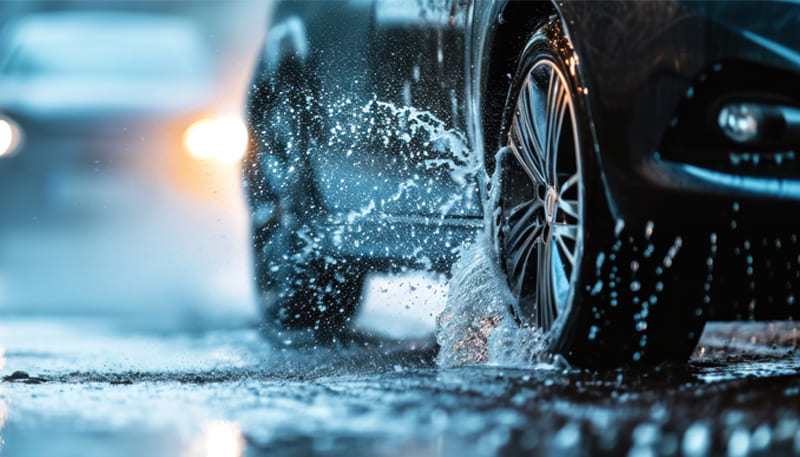Automobile
What Is Hydroplaning? Here’s What Causes It and How to Avoid It
Published
3 months agoon
By
Samuel Ting
When talking about rainy weather, most of us fear slippery roads. But, more than slippery roads, there is a fearsome phenomenon attached to rainy weather. It is called hydroplaning. This terrifying happening can turn your regular drive into a heart-stopping moment. When this happens, drivers feel entirely out of control. However, understanding about this occurrence can make the difference between a serious accident and a close call.
What is Hydroplaning?
Hydroplaning is otherwise called aquaplaning. It occurs when a layer of water builds up between the road surface and the tires of your vehicle. When this happens, your tires will lose contact with the road. As against gripping the asphalt, your tires start riding on a thin film of water. When this happens, you will lose acceleration control, braking, and even steering. So, you will feel like your vehicle is floating.
What Causes Hydroplaning?
Hydroplaning is usually caused by a combination of factors, like those mentioned below:
Speed
This is the most important factor contributing to hydroplaning. The faster you drive, the harder it becomes for the tires of your vehicle to displace water from under them. Even a small amount of standing water can lead to aquaplaning when you speed up.
Tire Tread Depth
The grooves in your tire treads are designed to channel water away from the contact patch. If the treads in your tires are worn, they cannot effectively get rid of water. So, the risk of hydroplaning increases.
Water Depth
Indeed, even shallow puddles can be an issue at speed. But when the depth of the standing water is high, there will naturally be an increase in the likelihood of aquaplaning.
Tire Pressure
When your tires are underinflated, they cannot effectively push water away from the contact area. So, they become more susceptible to hydroplaning. Similarly, overinflated tires can reduce the contact path, thereby increasing the risk.
Vehicle Weight
Lighter vehicles are more prone to aquaplaning compared to heavier vehicles. The reason is that light vehicles exert less pressure on the road surfaces.
Road Condition
When you ride on a road with uneven surfaces and poor drainage, the water can gather, thereby posing a higher risk of hydroplaning.
What To Do If You Hydroplane?
When you feel that your vehicle is aquaplaning, it can be fearsome. However, knowing what to do when hydroplaning can help you stay calm and handle the situation correctly. Here are some ideas to help you:
- Do not apply sudden brakes
- Ease off the accelerator
- Wait for the tires to regain traction
- Firmly hold the steering wheel
- Steer gently in the direction you wish to travel.
How to Avoid Hydroplaning?
Yes, it is possible to avoid aquaplaning. Here are some tips to follow:
- When riding in wet conditions, drive slowly
- Maintain good tire tread depth
- Make sure to maintain the right tire pressure
- Avoid standing water and puddles
- Drive in the tracks of the vehicles ahead
- Be aware of road conditions before you begin your trip during the rainy season.
By following safe driving practices during the rainy season, you’ll significantly reduce your risk and know exactly how to prevent hydroplaning!

New 240Hz 1440p Panels: What Changes for Players

From Chaos to Clarity: How Data Lake Zones Organize the Modern Data Stack

The Powerful Benefits of Omega-3 Fish Oil 1000mg for Overall Health

Legal & Regulatory Challenges for Aviator Games Globally

Tropical Travel Guide: Plan Your Perfect Vacation

Esports vs Classic Sports: Where’s the Real Competition?

Frametime vs FPS (2025): Why p95 Wins for Esports

Top 5 Security Challenges in Crypto Payment Development and How to Solve Them

VRR Explained: G‑Sync vs FreeSync for Competitive Play






